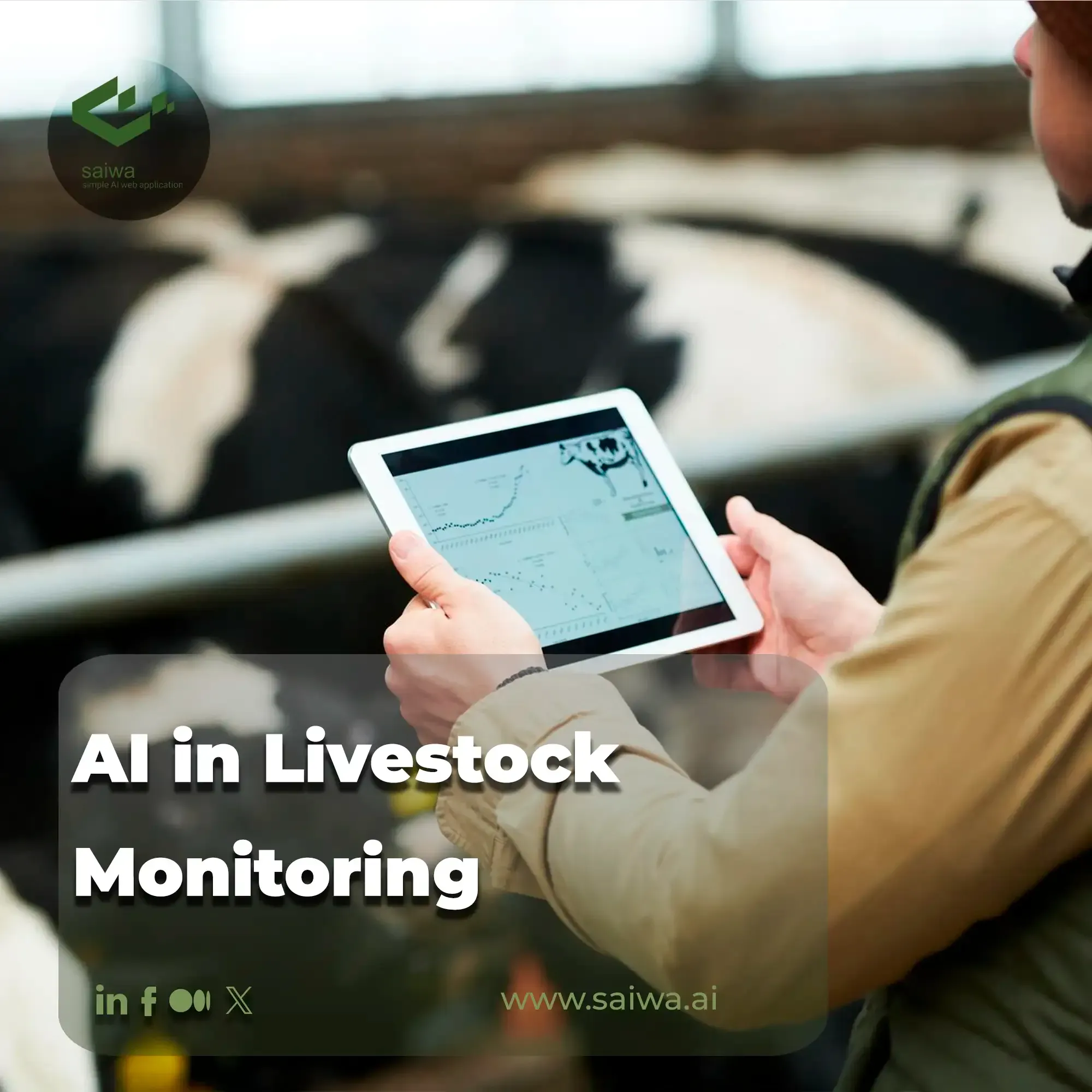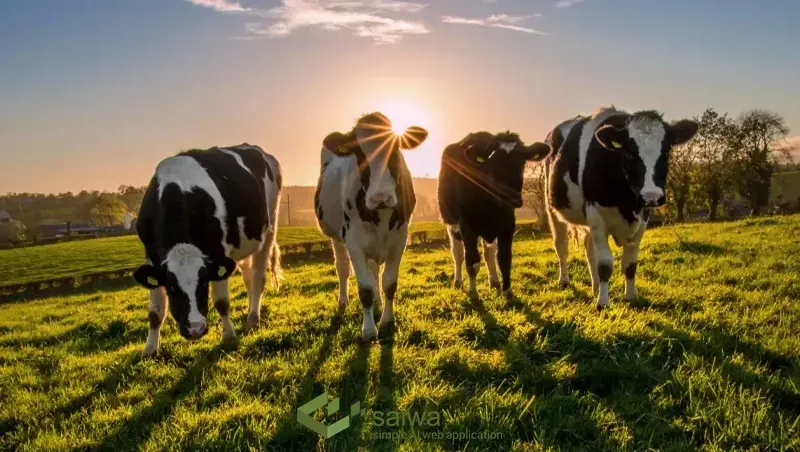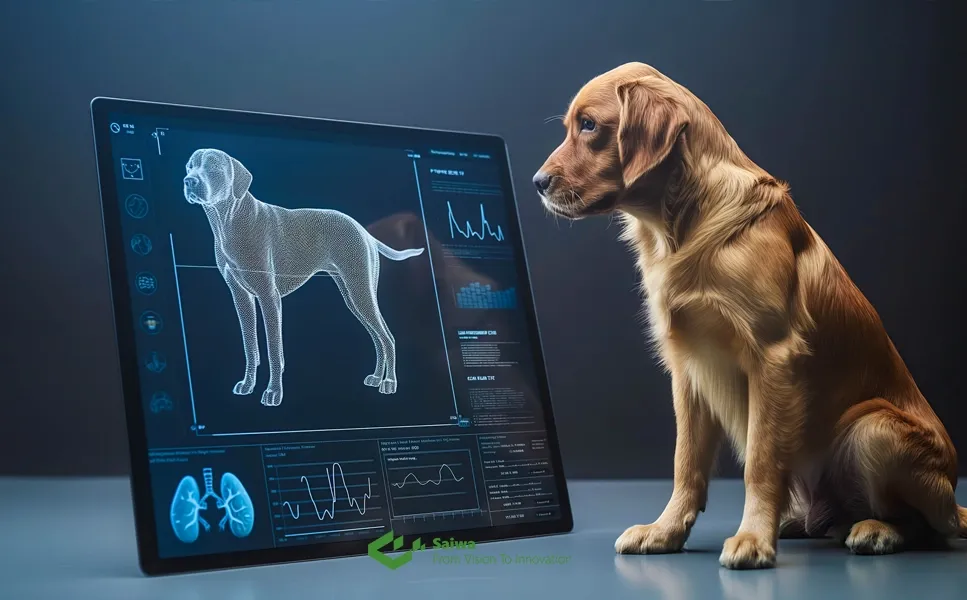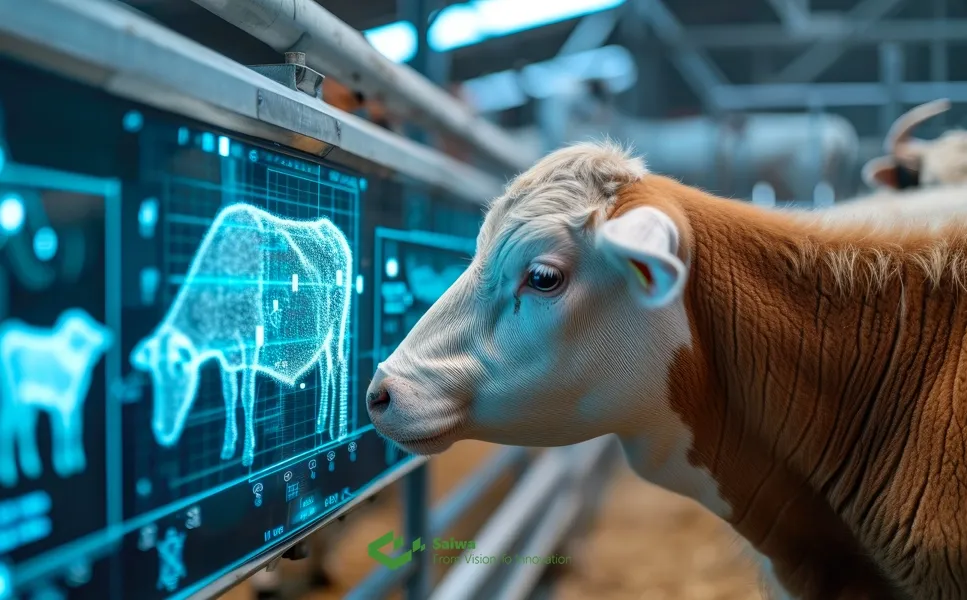AI in Livestock Monitoring: Improving Animal Health

Livestock production is moving from reactive management to intelligent, data driven care. Sensors, cameras, and connected devices can now capture everything from an animal’s movement and feeding patterns to subtle changes in temperature and behavior. On their own, however, these data streams are difficult to interpret at scale. Artificial intelligence bridges that gap by transforming raw measurements into insights about health, welfare, productivity, and risk.
In livestock monitoring, AI can detect early signs of disease, optimize nutrition, track animals in real time, and reduce manual workload, giving farmers a clearer view of their herds and the ability to act before small issues become costly problems.
Read Also: Practical Application & Future of AI in Agriculture
The role of AI in Livestock Monitoring and smart agriculture
As the world's population continues to grow, the need for efficient and sustainable agricultural practices has become paramount. The use of modern technology to improve agricultural productivity and livestock management is known as 'smart agriculture'. Artificial Intelligence (AI) plays an important role in this area, and AI-based solutions offer several benefits to farmers and ranchers, which we will discuss in the following sections.
The use of AI in livestock monitoring is helping to revolutionize the way farmers and ranchers manage their businesses. Automated monitoring and feeding systems make it easier to ensure animal health and care while reducing the time and effort required to manage livestock. In addition, AI-based solutions help improve livestock management and agricultural efficiency, helping ranchers and farmers increase productivity and profitability.
Read Also: AI in Wildlife Conservation

How does artificial intelligence help increase livestock productivity?
Artificial intelligence has created a great revolution in the way farmers manage livestock. Technologies based on artificial intelligence are used to improve livestock productivity, enhance animal health, and lessen the negative effects of animal agriculture on the environment.
Sensors based on artificial intelligence are used to monitor the health and welfare of livestock. Changes in body temperature, activity level, and other physiological parameters can be detected by these sensors. This data can be used to detect early signs of disease or damage, giving farmers the ability to quickly implement the necessary solutions and prevent further health problems.
Algorithms based on artificial intelligence are used to optimize food rations and nutritional programs. By analyzing data from various sources such as weather, livestock, and animal health, artificial intelligence can determine the optimal ratio for a particular animal. This helps farmers maximize their feed efficiency so animals are healthier and perform better.
AI-based analytics are used to monitor and manage the environmental impacts of animal agriculture. Artificial Intelligence (AI) can assist farmers in identifying areas where they can minimize their environmental impact by analyzing data from sources like soil health, air quality, and water quality.
The way farmers can care for their livestock is being revolutionized by artificial intelligence. Farmers can lower the environmental impact of animal agriculture, improve animal health, and increase livestock productivity with the aid of AI-based technologies.
Read Also: The Rise of Drone Livestock Monitoring | A Look at Cutting-Edge Tech for Modern Farmers
The impact of artificial intelligence on animal health and welfare
The impact of artificial intelligence on welfare and animal health is one of the most important topics in the agricultural industry. Artificial intelligence technology can change the way of managing and caring for livestock and create the possibility of more efficient and effective monitoring of animal health and welfare.
Artificial intelligence can be used to monitor livestock health in real time, enabling early detection of diseases and other health issues. This can help farmers quickly identify and address health problems and reduce the risk of losses due to disease or injury. AI can also be used to track animal behavior, providing valuable insights into their welfare and helping to identify any potential problems.
Using artificial intelligence, livestock management practices like feeding, breeding, and living can be optimized. By using artificial intelligence to analyze data from various sources, farmers can make more informed decisions about the best way to care for their animals. This can lead to improved animal welfare and improved productivity and efficiency.
Artificial intelligence can be used to automate some tasks, such as monitoring animal health and providing timely alerts in case of health problems. This can help reduce the time and effort needed to care for livestock and free up resources for other tasks.
In general, artificial intelligence can change the way livestock is managed and cared for and lead to the improvement of animal health and well-being. By using artificial intelligence technology, farmers can make more informed decisions about how to care for their animals, leading to better productivity and efficiency.

Applications of AI in Livestock Monitoring
In this section, we are going to discuss the applications of AI in Livestock Monitoring. With the help of this section, you can see what advantages this technology has in this industry and how it can greatly help people in this field:
Health analysis to predict and prevent disease
Health prediction is a process that artificial intelligence can perform to keep your livestock healthy. Artificial intelligence examines patterns and trends in health data and predicts possible diseases before they become serious. Thus, more effective responses can be made to these problems, and in addition to saving animal lives, capital kept himself
How AI in livestock management is used to monitor the health of livestock?
AI is essential to livestock management since it helps track animal health and identify disease or illness early on. Livestock managers can spot possible health issues before they worsen by analyzing large volumes of data collected from several sources through the combination of machine learning algorithms and predictive analytics.
Continuous data gathering and analysis from sensors and monitoring equipment is one of the main uses of AI in livestock management. These gadgets monitor essential characteristics including body temperature, heart rate, and activity levels, giving instantaneous information about each animal's health. Through the use of AI algorithms, patterns and deviations from physiological parameters or typical behavior can be identified, leading to the detection of potential health risks and the triggering of alerts.
One important tool for predicting health issues before they become apparent is predictive analytics. Predictive models work by examining past data on variables like feed quality, animal behavior, and weather patterns to find possible risk factors for particular diseases or health issues. For instance, using historical disease prevalence data in a certain area and environmental factors, AI systems may forecast the chance of an outbreak of a disease.
Machine learning algorithms further enhance the effectiveness of health monitoring systems by continuously learning from new data and refining their predictive capabilities. By analyzing diverse datasets encompassing factors such as genetic predispositions, dietary patterns, and environmental stressors, machine learning models can identify subtle correlations and early warning signs that might go unnoticed by traditional monitoring methods.
Moreover, AI-driven diagnostic tools can assist in the early detection of diseases by analyzing symptoms and clinical data. By comparing symptoms exhibited by individual animals to vast databases of known diseases and conditions, AI systems can provide accurate and timely diagnoses, enabling prompt intervention and treatment.
Essentially, AI transforms cattle management by utilizing machine learning algorithms and predictive analytics to enable early illness identification and proactive health monitoring. Livestock management may maximize animal health and well-being, reduce the risk of disease, and increase total agricultural productivity by utilizing data-driven insights.

Automatic livestock counting
It is tedious to count livestock manually, so artificial intelligence can be used for automatic counting. This is completed precisely and keeps you from losing any money. This technology can also be used through a drone and make the work very easy.
Read More: The Rise of Drone Livestock Monitoring | A Look at Cutting-Edge Tech for Modern Farmers
Optimizing nutrition
Artificial intelligence can help feed animals. It finds the requirements of the animals and modifies their diet accordingly. This ensures that each animal gets what it needs to grow strong and healthy.
Optimizing breeding through genetic data analysis
Are you looking for the best breed of your animals? AI can analyze their genetic data to make recommendations about the best breeding pairs. This will increase the quality of livestock and make the farm more successful.
Livestock tracking and localization in real time
Have you ever lost an animal? Artificial intelligence can track your livestock in real time and show you the exact locations. This will help keep your animals safe and will make managing many livestock easier.
Integration of AI with Blockchain for Livestock Traceability
Integrating of AI with blockchain technology is revolutionizing livestock traceability, offering unprecedented transparency and efficiency in animal health monitoring. By combining these technologies, farmers can now track the entire lifecycle of their livestock, from birth to market, ensuring that every aspect of animal health monitoring is accurately recorded and accessible.
AI enhances animal health monitoring by providing real-time insights into the condition of each animal. Sensors and AI algorithms continuously collect and analyze data on factors such as temperature, movement, and behavior. When integrated with blockchain, this data is securely stored and easily traceable, creating a permanent and tamper-proof record of each animal's health history.
Blockchain adds a layer of security and transparency to animal health monitoring by ensuring that all data is immutable and can be verified by anyone in the supply chain. This is particularly crucial in the event of disease outbreaks, where the ability to trace the source and spread of disease quickly can prevent widespread contamination.
Moreover, the combination of AI and blockchain in animal health monitoring allows for better regulatory compliance and consumer trust. Consumers can access detailed information about the livestock's health, feed, Crop Disease Detection, and treatment history, ensuring they purchase products from healthy, well-monitored animals.
Read Also: Sustainable Livestock Farming | Innovations for a Greener Future
Conclusion
AI supported livestock monitoring is becoming an essential part of modern farming. By collecting continuous data on health, nutrition, behavior, and environmental conditions, these systems allow farmers to respond earlier, manage risk more effectively, and strengthen animal welfare. They also support long term improvements in productivity through better feeding strategies, early disease detection, and more informed management decisions.
From a practical standpoint, AI tools do not replace the experience of farmers but help extend it. They provide a level of detail that would be difficult to observe manually and allow producers to make decisions with greater confidence. In my view, the farms that will benefit most are those that treat AI as a supportive partner rather than a stand-alone solution. With thoughtful use and clear goals, AI backed monitoring can become a dependable part of both daily operations and long term herd management.
Note: Some visuals on this blog post were generated using AI tools.
